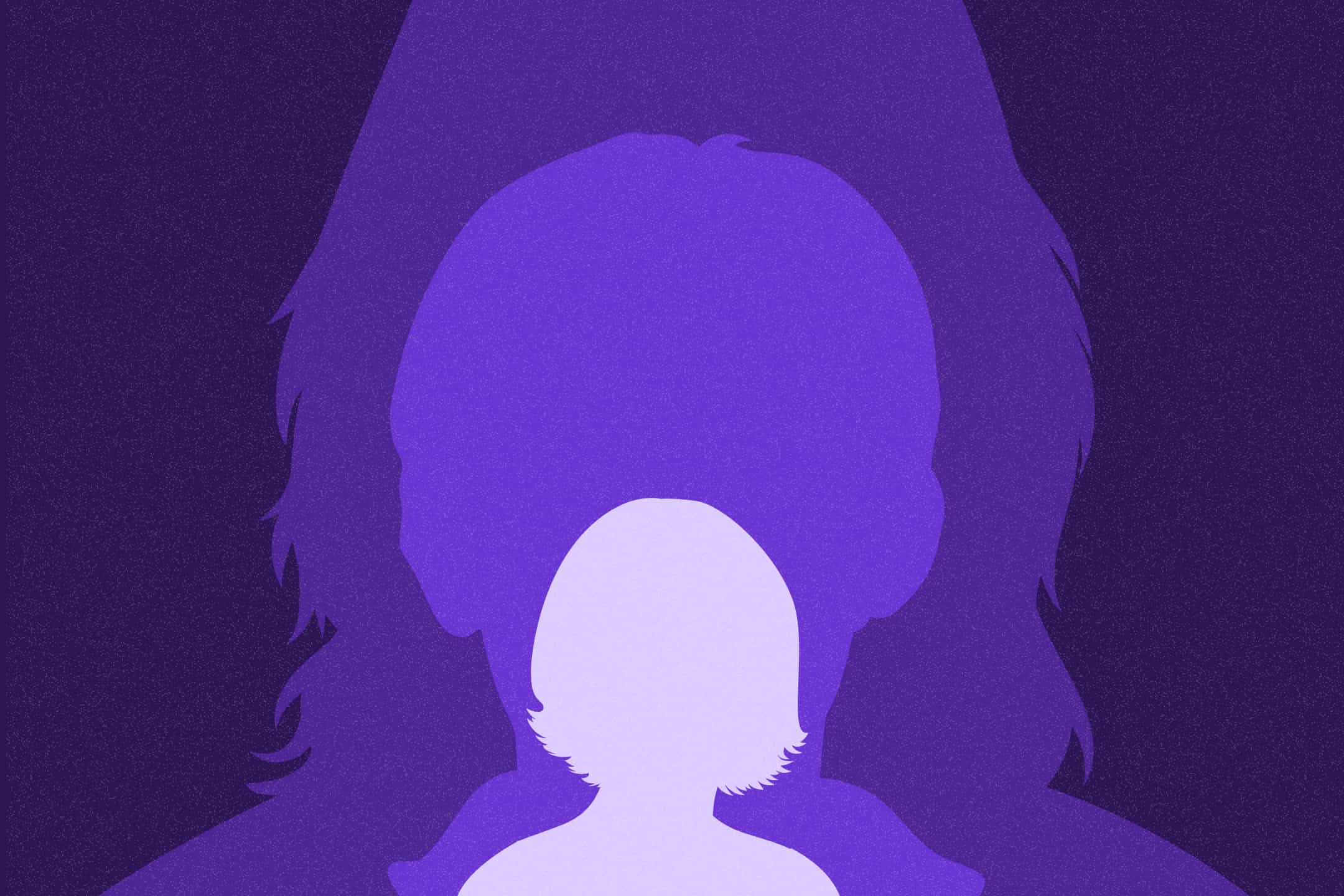
Business
“Becoming a mentor helped me see my own value.”
6th March 2025
8th January 2024
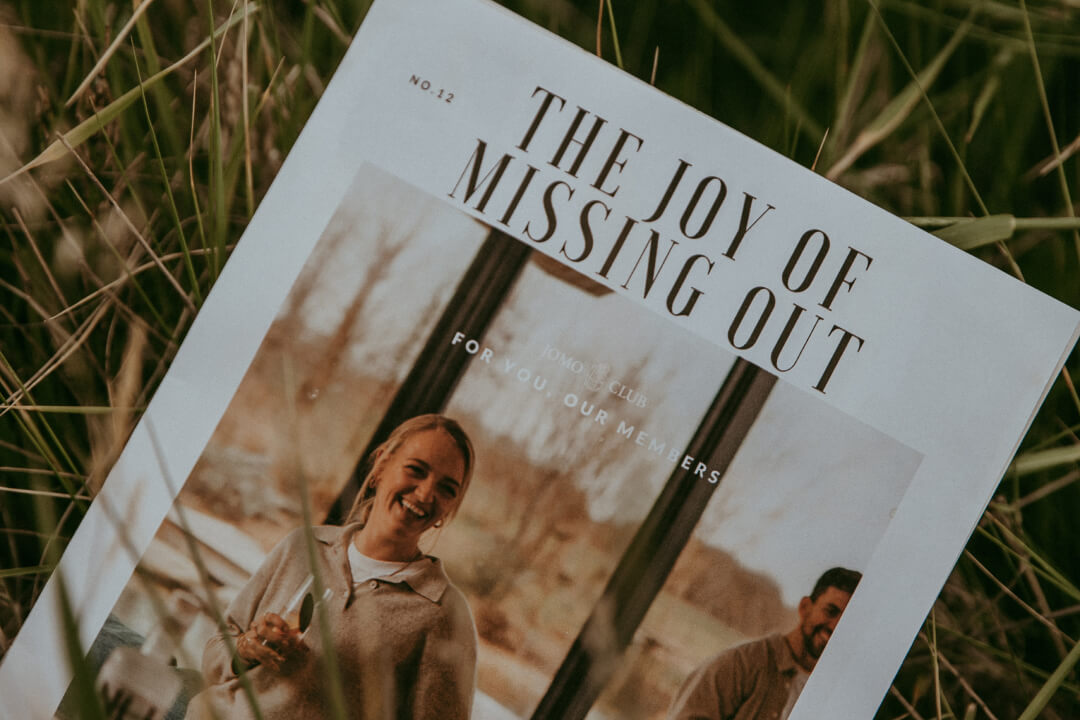
When I opened the menu for the beautiful Mallorcan restaurant Es Taller, I expected to choose something familiar – an Aperol spritz or glass of white rioja. But, after taking a moment to think about what I really wanted, I chose a ginger mojito: lots of mint, lots of kick, no alcohol.
Some may have referred to it as a ‘mocktail’ or even a ‘no-jito’ but to me, neither word fits. They sound too negative, implying that I missed out on something. They don’t communicate how sophisticated it was, how balanced, how much it felt like a treat.
I am not alone in my new found appreciation of delicious alcohol-free alternatives. Since 2019, sales of low and no-alcohol beer have more than doubled, according to the British Beer and Pub Association (BBPA) and CGA by NielsenIQ (a data and research consultancy). And in 2022, the drinks market analysis company IWSR reported that half of the UK adult population had bought a low or no-alcohol product, such as an alcohol-free beer or spirit, in the past.
There are many reasons why someone might choose a low or no alcohol drink – health, pregnancy, religion, being the designated driver, or simply preferring the taste. For me, a big factor was meeting Starling business customer Gemma Mills, who runs the alcohol-free subscription box JOMO Club (short for the Joy Of Missing Out). When it comes to the world of alcohol-free, her enthusiasm is endless – and infectious.
“Alcohol-free spirits are really in their element now,” says Gemma, 27. “We’ve been running JOMO Club for more than two years and we’ve never struggled to find new brands we want to feature – there are so many to discover.”
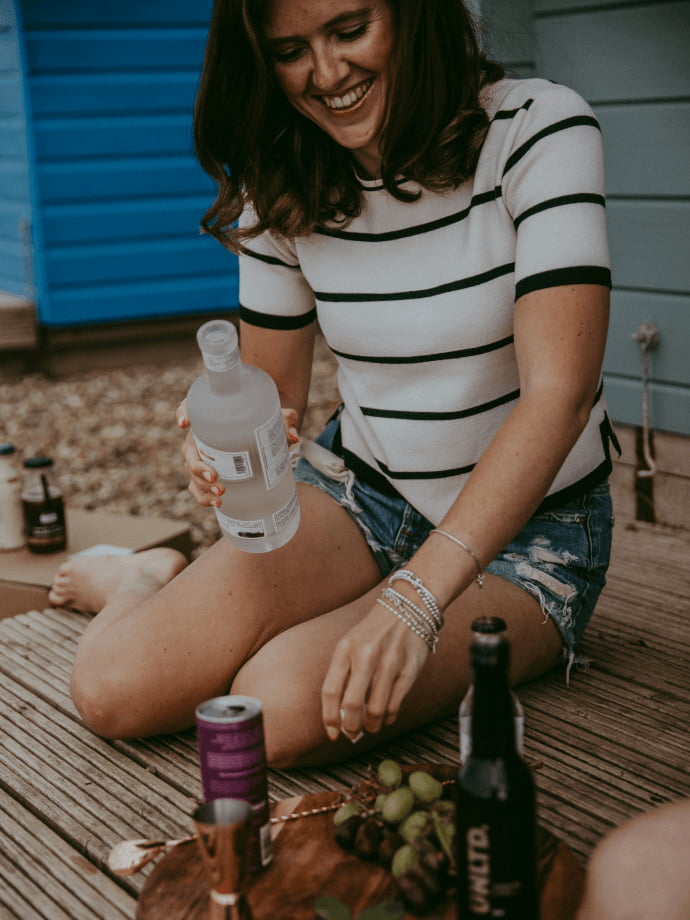
“Our core audience is 28-58 and 75% are women. Gen Z (those born during the late 1990s and early 2000s) are often named ‘the sober generation’ but they’re not our target audience. Some people in that generation haven’t been drinking at all from the beginning and we’re a subscription-based business so our subscribers tend to people who are fairly established in their careers and therefore have higher salaries.
“But we’ve been surprised at how broad our customer spectrum is: 15% are drinkers, 30% are sober and 55% describe themselves as ‘mindful drinkers’, meaning that they want to actively cut down how much alcohol they drink.”
As with any trend, new words and phrases orbit around it. In addition to ‘mindful drinking’, you might also hear about being ‘sober curious’, meaning that you’re open to trying out sobriety, or ‘non-alc’, short for non-alcoholic, if you start to explore the world of alcohol-free.
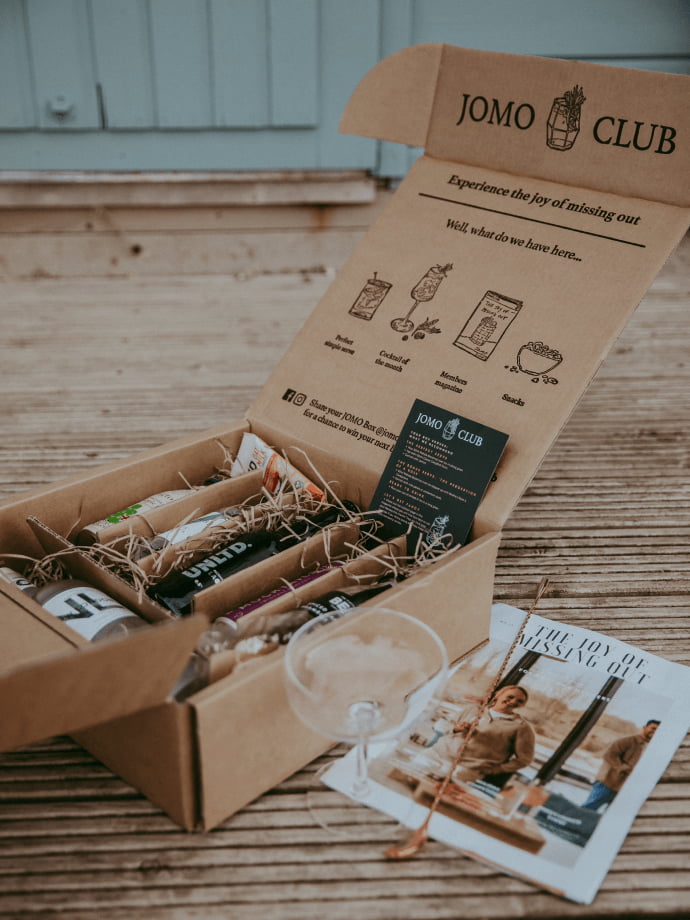
“When I set up the clinic, I really wanted to look at practical solutions for women,” says Smita, 43. “Menopause is a time of quite considerable change for a lot of women. There are more than 30 identifiable symptoms, some of which can be improved by reducing alcohol. For example, alcohol lowers sleep quality, which can lead to further energy loss, something that can already be a problem during the menopause.
“The box felt like a fun and practical offer. It had a CBD drink, a botanical spirit called Sentia that has been produced to promote relaxation, apple cider vinegar, which is brilliant for gut health, and zero percent prosecco, which had a good taste and colour. It also had some menopause supplements from M-Boost and some coconut water.”
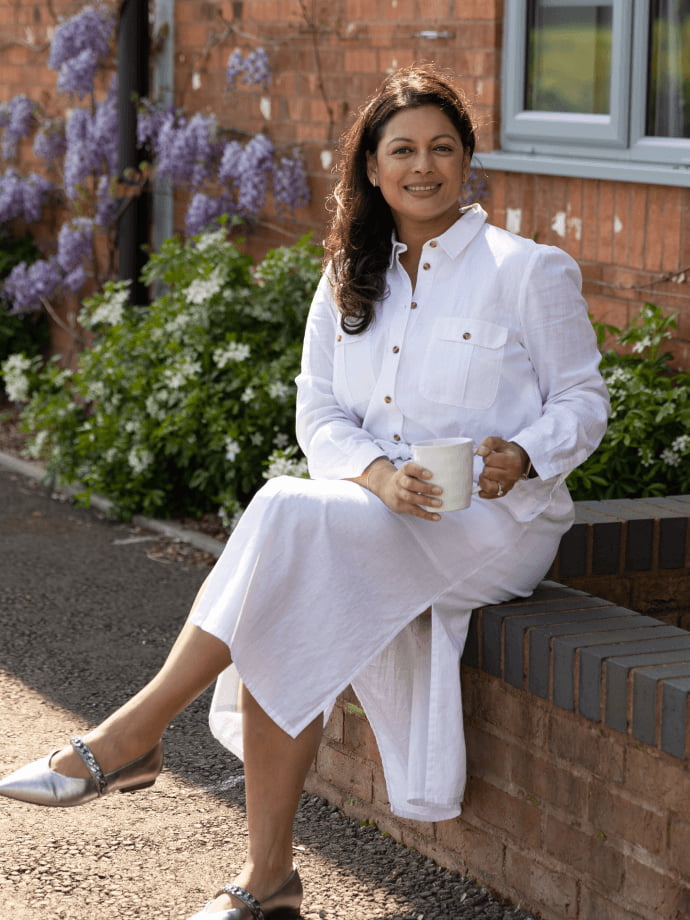
Smita herself stopped drinking in 2022, shortly after her husband decided to cut out alcohol as part of his health and fitness goals. “The key thing for me was cancer risk; one in eight women will experience breast cancer in their lifetime. There are some risk factors that I can’t change – my ethnicity and that I haven’t had children – and there are others I can: exercise, diet, how I take care of myself.
“I tried a 28-day challenge of no alcohol and found some zero percent alternatives that I liked. And what’s great is that I don’t have to go anywhere special to find a zero percent option – it’s just part of the menu.”
Doing a 28-day challenge, for example for Dry January or Sober October, is how many sober curious people first explore cutting down their alcohol intake. According to Alcohol Change UK, 8.5 million people plan to take part in Dry January in 2024.
“A month allows you to see the changes in your body and, if they feel uncomfortable saying that they’re not drinking to friends, gives them an easy way to explain what they’re doing,” says Gemma. Alcohol Change UK reported that 70% of Dry January participants sleep better and 66% have more energy, compared to months when they’re drinking alcohol.
“I feel a difference in my sleep and notice it in my skin,” says Gemma. “I also have lower anxiety levels and higher productivity when I don’t drink.”
She and her partner and co-founder Richard Nicholls initially looked into alcohol alternatives in 2020 during the first lockdown when they were both working from home. “Making a gin and tonic became the divide between our working day and the relaxing part of the evening. But after a while, we found that doing this everyday was having a real impact on our health.
“We found that there were heaps of other options out there – I like Aperol and Campari and there are loads of alcohol-free aperitifs, Richard likes tequila and, again, there are loads of alcohol-free tequilas.” They still drink alcohol from time to time, but often prefer the alternatives they’ve discovered and featured in JOMO Club.
Another reason people cut down – or cut out – alcohol is to save money, especially during a cost of living crisis. In 2023, the IWSR reported that money worries are among the reasons people choose to reduce the number of occasions they drink alcohol, or reduce the number of alcoholic drinks they have on a given occasion.
That said, many low or no alcohol drinks are complex to make, something that is reflected in the price, so they shouldn’t necessarily be seen as a cheaper alternative. The JOMO Club bottle shop, which allows people to replenish their stock of their favourite non-alcoholic spirits, lists products that range from £8 to £30 per bottle.
Of course, some people pick up a bottle or ask for a pint of something not because of its alcohol content but because of its taste. This is the case for many of the people raving about Botivo, an alcohol-free drink handmade on Lannock Farm in Hertfordshire, run by Starling business customers Sam Paget Steavenson and Imme Ermgassen.
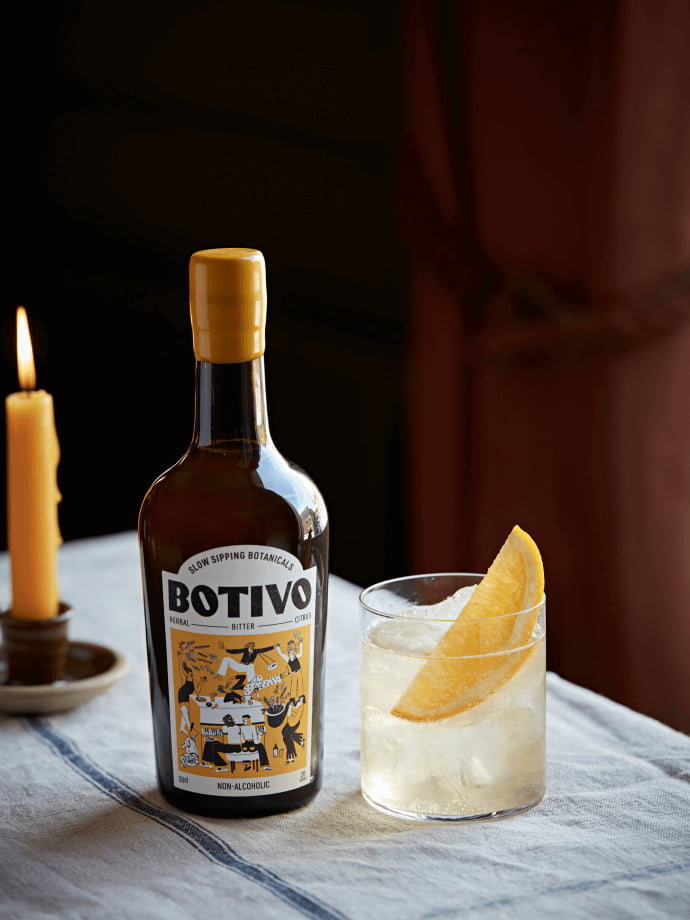
“Every detail is constructed for this perfect balance – we pick each leaf off the thyme stem to put it into our batch because the stem is too woody. We only make 4,000 bottles per batch and each has a slight nuance because we’re using raw materials that depend on the sun or the soil or pollination.”
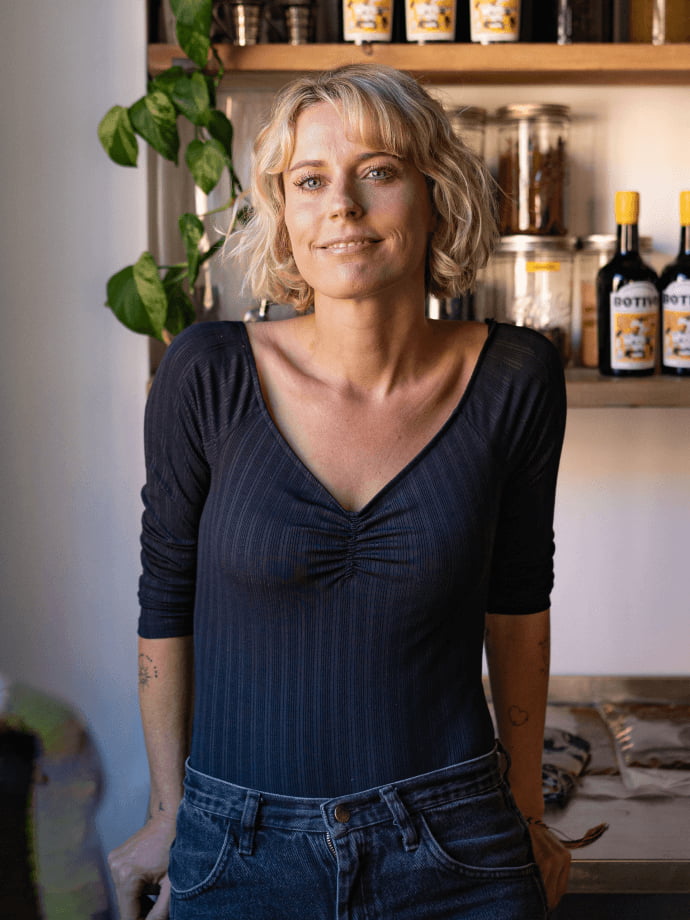
“Being compared to all drinks is our whole thing,” says Imme. “We want to be a world class drink, not just in the non-alcoholic world but in the whole drinks world. That’s why my co-founder Sam developed the recipe – not with moderation in mind but with pleasure in mind. In my dreams, we wouldn’t even have to put ‘non-alcoholic’ on the bottle; 90% of our customers are drinkers – they’re not looking to replace alcohol, it’s just another thing in their repertoire.”
This is exactly how JOMO Club subscriber Richard Norris feels. “Discovering the world of alcohol-free through JOMO Club has opened up a whole new cupboard of drinks I never had before,” says Richard, 51.
“Having a glass of wine used to be my default when I got home from work. Now, my alcohol-free shelf is easily double the size of my alcohol shelf. There’s still a sense of theatre about making myself a drink but it’s guilt-free and gives my life so much more freedom.
“It means fewer hangovers and a much more varied social life. Alcohol prevents you from driving, so now I go for more meals out. I go to gigs all the time and I’m starting to see it rub off on my friends. If we’re out during the week, lots of us will drink alcohol-free beer.”
The opportunity for people to try their product is why founders Imme and Sam wanted Botivo to be part of JOMO Club. “Botivo is not a mimic drink. We’re not a non-alc beer or gin or vodka, so one of the biggest challenges is getting people to taste it so they understand that it’s a completely new flavour profile.”
Imme herself joined Botivo as a co-founder after trying it at a friend’s house. “I’m the last person to drink a non-alcoholic drink but I became obsessed with it.”
The IWSR has reported that the UK’s no or low-alcohol market is expected to grow by 7% year on year between 2022 and 2026 and that globally, consumption of low and no alcohol drinks will rise by a third by 2026.
Imme hopes that during this time, a culture around alcohol-free drinks will develop, akin to the culture around wine, whisky and beer, where people want to visit the vineyards, distilleries and breweries to see how the products are made.
For Richard, Smita and Gemma, the future of alcohol-free is all about conversations, both within friendship groups and families – and in the media. “I think the next step is for everyone to feel that they’re able to talk about not drinking or drinking less,” says Smita.
“There’s this idea of being ‘openly sober’ as if it were something to hide,” adds Gemma. “But it’s something to celebrate.”
Gemma lives and breathes the joy of JOMO Club. It’s no wonder speaking to her sparked my interest in the world of alcohol-free which, so far, I’m wandering through very happily. I find myself asking what I actually feel like, rather than reverting to a default, confident in the knowledge that I won’t lose the ritual of flipping through a menu or pouring out a measure of something into my favourite glass and topping it with tonic. With or without alcohol, the drink I choose feels special – just as it should.

Business
6th March 2025

Business
24th May 2024

Business
24th May 2024

Money Truths
29th May 2025

Money Truths
28th May 2025

Money Truths
20th May 2025